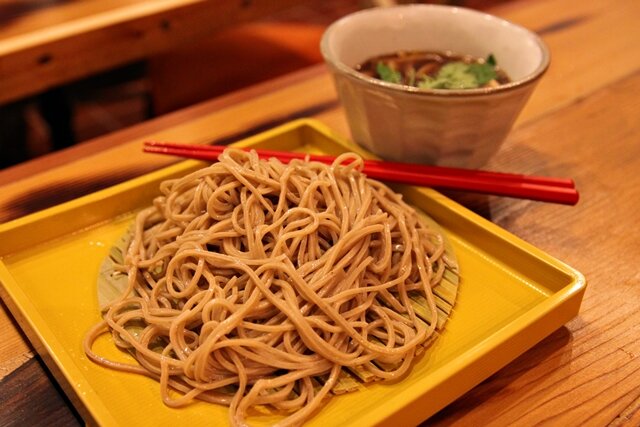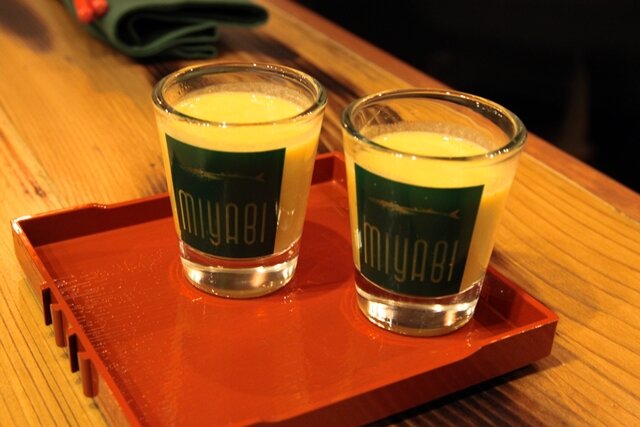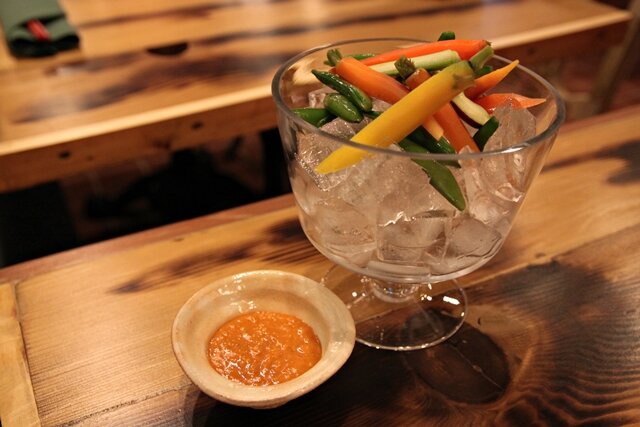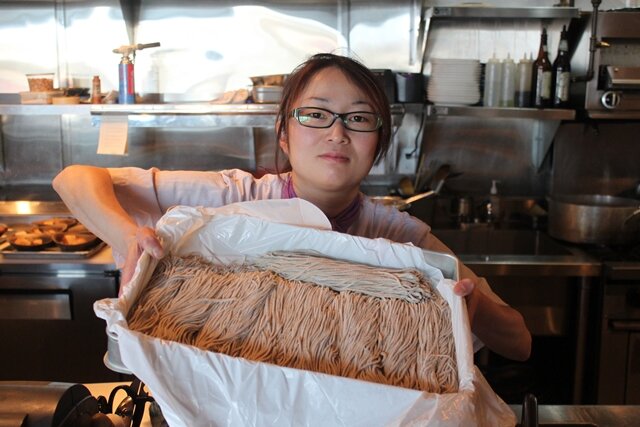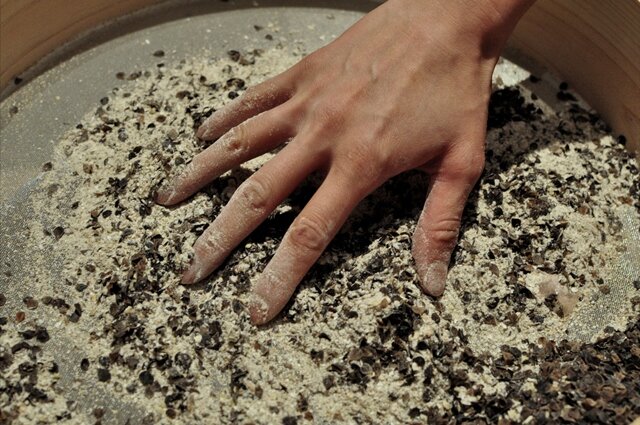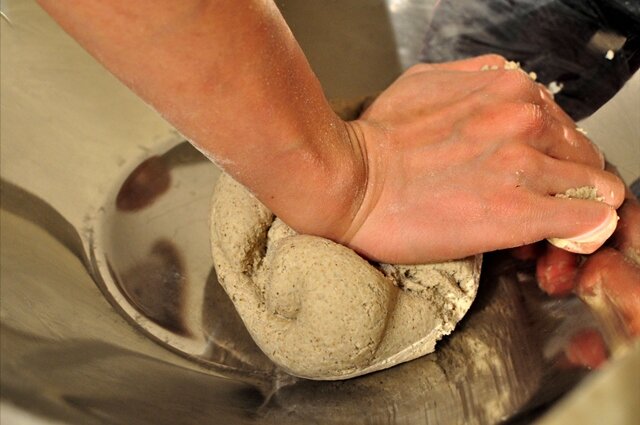It’s been fun watching the evolution of Mutsuko Soma since the closing of Chez Shea left the chef shopping for new options. She had a (buckwheat) seed of an idea to start serving handmade soba, and saw success in a variety of pop-ups, including the ones I attended at Sushi Kappo Tamura and Miyabi Restaurant in Tukwila.
But her vision extended beyond soba, and in striking up a partnership with Miyabi, she’s bringing a piece of Southcenter north to Wallingford in opening Miyabi 45th. (There’s more information at the restaurant’s Facebook page.) I wrote previously how 45th Street in Wallingford is becoming a bit of a Nihonmachi, but Miyabi 45th brings Japanese food unlike any found in that neighborhood—or in the whole Seattle area. Soma’s menu has Japanese dishes with European influences; it’s fusion that’s accessible without the pretentiousness of a place like Nishino.
Making her soba noodles from scratch, Soma carves out a new noodle niche in Seattle that’s actually rare to find in any U.S. city. Seattle has its share of ramen joints (though only Samurai makes its own noodles) and a fairly new udon restaurant (U:Don), but now we have a chance to try what some say is the most sophisticated of fresh Japanese noodles. I believe soba is best eaten cold, and Miyabi 45th serves seven this way, with dipping sauces that range from the basic bonito broth with negi and wasabi ($9) to fancier ones like kamoseiro ($17)—the signature soup (hot) with duck and leek.
There are two bukkake-style soba bowls: one with natto ($12) and another called “California” ($15) with shrimp tempura, avocado, cucumber, grated daikon, and nori. And then there are seven hot noodles in hot broth, ranging from plain to offerings with oysters, pork belly, and duck breast.
The soba’s super, but you’ll want to sample other parts of the menu, including the snacks, salads, and hot and cold plates which let Soma show off her European flair. Look for dishes like beef tartare with spicy miso (I’ll be working on making this addictive gochujang-infused miso at home), foie saikyo-zuke (marinated fish with Brussels sprouts, sunchokes, and soy balsamic gastrique), and perhaps the most intriguing item on the menu: the cheese plate. It sounds simple, but in addition to a smart collection of quality cheeses, this plate might include intriguing bites like miso-marinated brie, fermented tofu, and candied spaghetti squash—guaranteed to have you reaching for a beer, sake, or an interesting cocktail.
Of course, there are some traditional Japanese dishes, still done with a twist. Saba battera is delicious (three cheers for using Washington mackerel!), matsutake chawanmushi will likely use local mushrooms, and agedashi soba tofu brings Soma’s love for buckwheat back into the mix in a delicate way.
Miyabi 45th is scheduled to officially open this week. My recommendation: Order omakase-style, proposing an amount to spend on chef-picked items and a plate or bowl of soba noodles.
